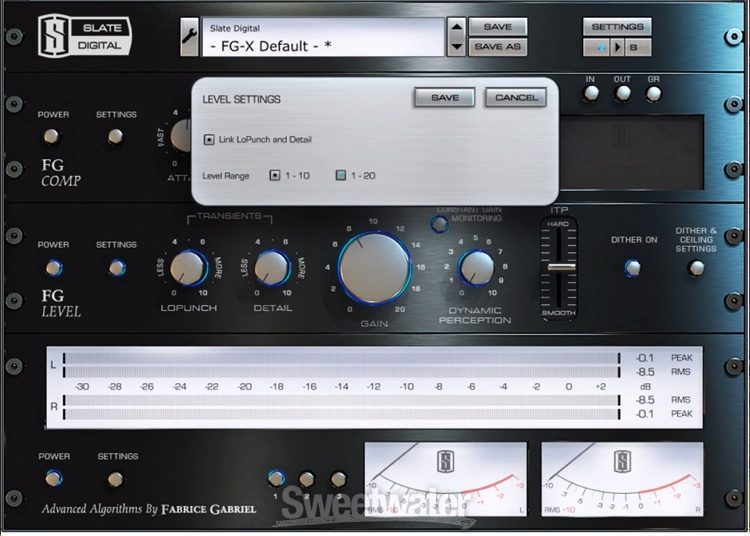

元-LL MultiMaximizer is the most invisible to my ears, and I can get 12-18 db of gain reduction without hearing pumping from single-band operation or too-long release times, chattering or intermodulation distortion from too-short release times, etc. I just want massive amounts of gain reduction, auto-make-up gain, and basically a one-knob "make sound bigger" mode. For me, that's veering into "transient designer" territory and is a different argument that I tackle on a per-track basis. I generally HATE to use compression that I can actually "hear" - unless I'm doing a PortisHead drum sound, I don't want to hear the release time at all, and I always use zero attack time and look-ahead so there's no "pip" on the attack of anything that needs to be adjusted. "Make the quiet parts louder and clamp down hard on the loud parts please, and don't make me adjust a thousand parameters to get there." I'm just using these things to alleviate the "dang it why is everything so freaking quiet?!?!" problem - and as a way to avoid using any volume automation. So if my processing reduces the realism and natural balance of the sound I'd never know it.
Slate fgx update tv#
I started doing this when working on tv scores where I just had to compose-compose-compose-PRINT!Īlso my program material is by no means a realistic orchestral sound - it's always got some orchestral textures in it, alongside war drums and electronic drums, and hybrid drones and textures, etc. That way of working isn't for everyone, but it works for me. That way there's no surprises when I un-bypass the thing later on and go, "Whoa nelly, what just happened?" So when I balance sounds and apply individual eq and compression it's always "in context" with what's going to happen to those sounds downstream. So definitely "mixing INTO the limiters" - actually an even more extreme version of that process. While I'm doing sound design, selecting sounds, building a template, composing, mixing. I don't apply it to an existing mix, it's always in place and active. Enter the Slate Digital FG-X Virtual Mastering Processor.Well, one thing about how I use it is that it's ALWAYS on my stem sub-masters. Both static saturation and clipping have a small window of gain maximizing before audible distortion. Clipping greatly reduces low end punch and is very poor at retaining sub bass. Static saturation curves are not universal in their ability to sound good on all transients. However, both of these methods, while better then peak limiting, have their downfalls. Another popular method is clipping the front end of expensive A/D converters. One of the more popular techniques is the use of saturation in both the analog and digital domain. Some of the top mastering engineers have found ways to combat this sonic degradation by using techniques other then Peak Limiting.

Peak limiters attenuate transients and often reduce punch, stereo imaging, can greatly alter mix balances, and cause a fatiguing result to the ears. One of the main causes of this epidemic is the use of the Peak Limiter to achieve increased levels in the mastering stage. Masters have become louder and louder, at the expense of the music becoming harsh and lacking punch and dynamics. We have all been at the mercy of the "loudness wars" for over ten years now. Imagine mastering your mixes without causing the lifeless, squashed, and over compressed sound that has become so common in modern music.


 0 kommentar(er)
0 kommentar(er)
